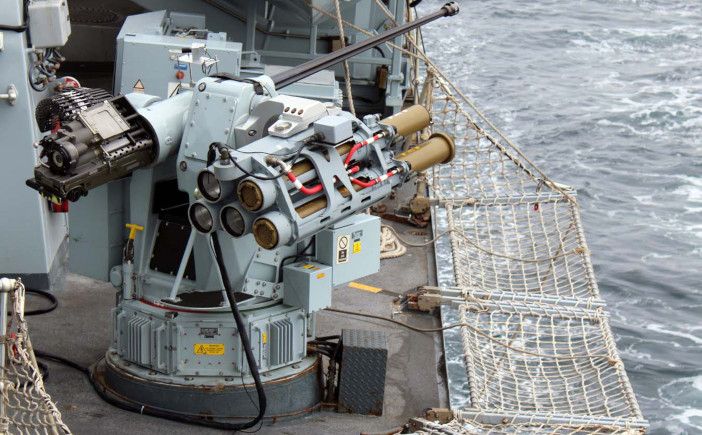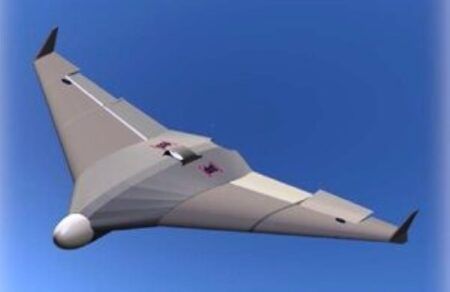The UK’s Royal Navy has successfully test fired Thales’ Lightweight Multirole Missile, the Martlet, from a 30mm automatic gun on board a Type 23 frigate.
The Martlet is intended to be used against static targets, vehicles, fast attack craft and drones. Thales originally developed the missile for use by the Royal Navy’s Wildcat helicopters, but the lightweight missile system has also been modified for use by drones, ground vehicles and naval craft.
The Royal Navy tested four Martlet missiles from the HMS Sutherland in the Irish Sea off the coast of Wales earlier this month. The target was a fast inshore attack craft tearing across the water.
For the tests, engineers first proved that the gun could still fire accurately with the missile fitted – 120 rounds obliterated a large red ‘killer tomato’ target – and that Martlet’s sensors could track its radio-controlled foe at ranges of up to 5km.
A missile was then fired to test the effect of the Martlet blasting off from its launcher on the gun mounting and the side of Sutherland – the missile accelerates to one and a half times the speed of sound in an instant. Three missiles were also fired equipped with telemetry to measure the missile’s accuracy. Ordinarily the weapon carries a 3kg warhead.
The testing was recorded by high resolution cameras so a team from Thales and military scientists could analyze the effects in minute detail.
“The current defence against fast inshore attack craft, the 30mm gun, is highly effective for closer range engagements,” said lieutenant commander George Blakeman, HMS Sutherland’s weapon engineer officer.
“By adding the missile to the gun mount it is anticipated it will extend the reach of the ship’s defensive systems – key to successful defence against fast craft using swarm attack tactics.
The frigate’s commanding officer, commander Tom Weaver said, “The impressive result of this trial was achieved through the hard work and cooperation of a wide array of industry and defence partners and it was rewarding for Sutherland to have played such a key role in its success.”





